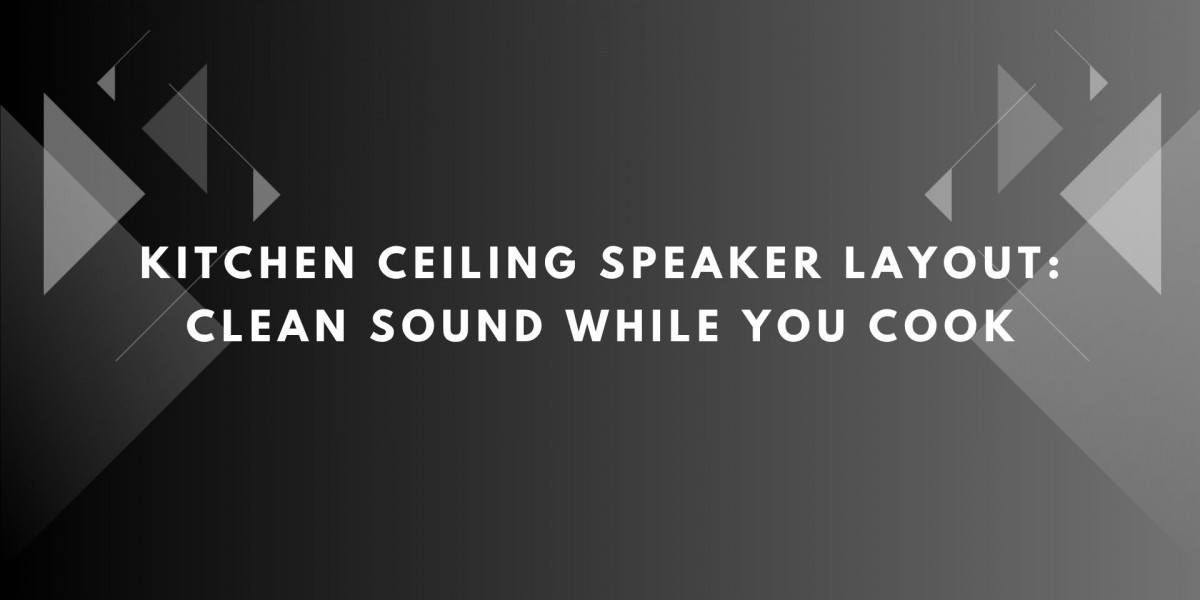Creating a seamless audio experience in every corner of your home is no longer just a luxury—it has become a design and entertainment essential. The kitchen, often considered the heart of the home, deserves as much audio attention as the living room or home theater. Whether you are preparing meals, entertaining guests, or just enjoying some background music while cleaning up, having the right kitchen ceiling speaker layout can dramatically improve the sound quality and user experience.
XTEN-AV helps integrators, designers, and homeowners with precise AV planning tools to bring audio visions to life. One of the most useful applications of these tools is designing smart and effective ceiling speaker layouts for every kind of space—including kitchens.
Let us explore how you can plan an optimal ceiling speaker layout for your kitchen, keeping in mind acoustics, speaker placement, and aesthetics.
Why You Need Speakers in the Kitchen
The kitchen is one of the most active rooms in the house. It is not only where meals are prepared but also a social space where family and friends gather. With so much happening, the ability to listen to music, podcasts, or even take hands-free calls becomes incredibly valuable.
But placing speakers on counters or shelves often creates clutter and uneven audio coverage. That is where ceiling speakers come in—they offer clean lines, save space, and provide consistent sound without getting in the way.
Key Considerations Before Planning a Ceiling Speaker Layout
Before installing any equipment, consider the following aspects of your kitchen:
Room Size and Shape
The size of your kitchen will dictate how many speakers you need. A smaller kitchen may only need one or two speakers, while a larger open-concept kitchen may need multiple to avoid sound drop-offs.Ceiling Height
High ceilings may require different speaker spacing compared to standard-height ceilings. Taller ceilings disperse sound more, so you may need more speakers for even coverage.Materials and Acoustics
Hard surfaces like tile, granite, and stainless steel reflect sound. This can lead to echoes or poor clarity. Soft surfaces such as curtains or rugs (if any) help absorb sound. Your layout should account for this balance.Lighting Fixtures and Obstacles
Avoid placing speakers too close to lights or HVAC vents. These can interfere with sound and may complicate installation.
Recommended Kitchen Ceiling Speaker Layout
To create an effective ceiling speaker layout, you need to ensure even sound coverage throughout the kitchen. Here are a few layout tips:
1. Two-Speaker Setup for Small Kitchens
For a kitchen that is under 150 square feet, a pair of in-ceiling speakers is usually enough. Mount them 4 to 6 feet apart, roughly centered in the space, while maintaining an equal distance from walls and cabinets.
2. Four-Speaker Setup for Large or Open Kitchens
In larger spaces or kitchens that blend into a dining or family area, consider a four-speaker layout. Divide the kitchen into zones and place speakers in each zone. This keeps the volume level consistent across the room without the need to blast the audio from one corner.
3. Stereo vs Mono Playback
Most in-ceiling speakers are sold as stereo pairs (left and right). In smaller kitchens, a single stereo speaker may suffice. But if your kitchen is large or has multiple zones, it is better to go for a mono setup in each speaker to ensure balanced sound throughout.
Placement Tips for Better Sound
Avoid installing directly above noisy appliances like dishwashers or ovens.
Keep speakers at least 18 inches away from walls or cabinets to prevent muffled sound.
Angle speakers slightly toward the primary cooking area or island, if the model allows for it.
Use moisture-resistant speakers since kitchens can be humid.
Using XTEN-AV for Kitchen Audio Planning
XTEN-AV offers cloud-based design tools that simplify the AV layout process. Whether you are a professional AV integrator or a DIY homeowner, the platform helps you visualize the best ceiling speaker layout using accurate measurements and room dimensions.
By inputting your kitchen's size and layout into XTEN-AV’s software, you can get precise speaker placement recommendations. This ensures balanced sound coverage and helps avoid costly trial-and-error during installation.
The Aesthetics of Ceiling Speakers
Modern in-ceiling speakers blend beautifully with kitchen ceilings. Many come with paintable grilles and low-profile designs, making them virtually invisible. When designed correctly, the layout enhances the room’s aesthetic while delivering superior sound.
Smart Integration Possibilities
For added functionality, ceiling speakers can be integrated with smart home systems. With platforms like Alexa, Google Assistant, or Apple HomeKit, you can control your kitchen audio hands-free. This is particularly helpful when your hands are occupied with cooking.
Additionally, using multi-room audio systems like Sonos or Control4 allows the kitchen audio to sync with other rooms, maintaining continuity throughout your home.
Final Thoughts
A well-planned ceiling speaker layout can transform your kitchen into a dynamic, functional, and enjoyable space. Whether you are catching up on your favorite playlist, listening to a recipe podcast, or entertaining guests, clear and even sound can make all the difference.
By leveraging tools like XTEN-AV and understanding the acoustic needs of your kitchen, you can ensure a sound solution that delivers both performance and style. Audio should not be an afterthought—especially in the one room where everyone ends up gathering.
Read more: https://social.japrime.id/read-blog/140338








